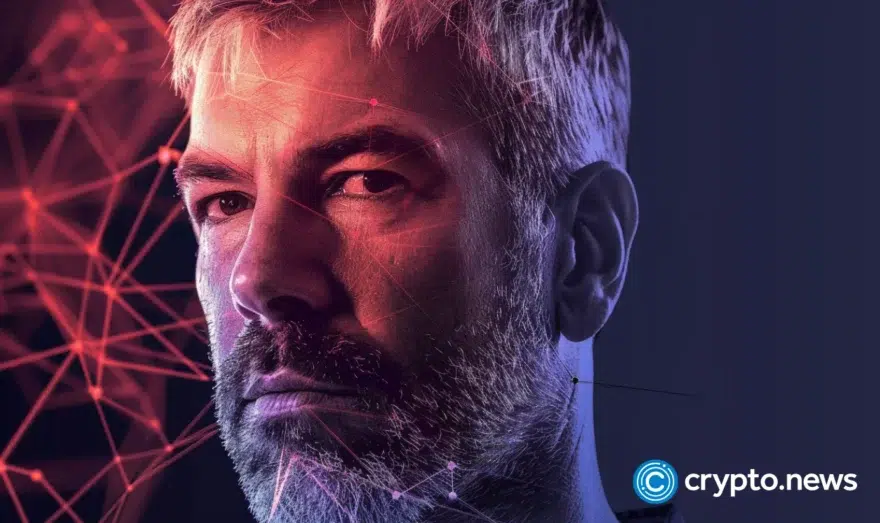Bitcoin’s quantum time bomb: Institutional readiness can’t wait | Opinion

Disclosure: The views and opinions expressed here belong solely to the author and do not represent the views and opinions of crypto.news’ editorial.
Geopolitical heavyweights are treating quantum computing as a national security priority, pouring billions. Yet Bitcoin’s (BTC) foundational cryptography is laid bare. Institutions must insist on post-quantum defenses now or risk watching trillions evaporate by a quantum attack in 3 to 5 years. The “Q-day” conversation has shifted from “if” it will happen to “when,” and now centers on how institutional players will respond.
- Quantum is not theory, it’s a ticking clock — Bitcoin’s elliptic curve signatures can already be harvested today and cracked tomorrow once quantum hardware hits critical scale.
- BlackRock and IBM are sounding alarms — intelligence agencies are likely stockpiling exposed keys, waiting for “Q-Day” to flip Bitcoin security on its head.
- Bitcoin’s defense is too slow — the BIP process and phased upgrades can’t match the speed of a classified quantum breakthrough, leaving addresses as sitting ducks.
- Institutions must act now — custodians and exchanges need quantum-resistant custody, lifecycle audits, and adoption of NIST-approved algorithms before disaster strikes.
- Preparedness is a competitive edge — early movers not only protect assets but also win trust, regulatory confidence, and inflows in a shaken market.
BlackRock has openly flagged this quantum threat. From an institutional point of view, the stakes are quite high — even catastrophic the minute “cryptographic relevance” becomes a reality. The question isn’t whether quantum poses a risk. It’s what the industry must do—right now—to prepare.
Quantum risk isn’t a warning, it’s a wake-up call
Bitcoin secures its transactions using elliptic curve digital signatures. IBM researcher Jay Gambetta warns that the fuse is already lit, and on-chain signatures are already compromised. How does that work? Adversaries store them to decrypt later, once the required qubit threshold for decryption is achieved by quantum hardware. This “harvest-now, decrypt-later” tactic turns exposed signatures into ticking time bombs — transactions validated today may be broken and reversed tomorrow.
Intelligence agencies are also silently keeping tabs on high-value Bitcoin addresses, storing data, and counting down to a quantum breakthrough. When that happens, unspent P2PK coins are exposed with no defense from the protocol.
Bitcoin’s vulnerabilities and high stakes
What does a quantum future look like without immediate updates? Since custodians still lack post-quantum safeguards for both cold vaults and hot wallets, a single successful quantum invasion would set off a fire sale.
Prices would crumble, exchanges might be pushed toward insolvency, and decentralized finance protocols would shake. The wider digital-asset ecosystem would suffer a crisis of confidence from which it might never recover. Fortunes made through institutional bets on Bitcoin’s security could disappear. The good news is, there is still time to prepare.
Bitcoin’s BIP timeline is too slow to stop quantum threats
The Bitcoin Improvement Proposal (BIP) finally acknowledges what intelligence agencies have been preparing for in the shadows: the “Q-Day”. But the industry’s reaction is in extreme slow motion. It’s about the assumed timeline of predictability that simply doesn’t exist.
On paper, Bitcoin Improvement Proposal’s “phased” approach seems like reasonable progress; in practice, it is dangerously naive. Considering quantum breakthroughs are executed behind classified doors, not in public research papers. The damage is invisible until the collapse. Every vulnerable Bitcoin address is like a sitting duck for future exploitation, as by the time BIP is implemented, “harvest-now-decrypt-later” attacks will have logged exposed Bitcoin addresses to exploit later.
The actual risk lies in its dependency on hard fork consensus during a live quantum breach. When quantum havoc arrives, signatures are broken in real time, Bitcoin will be a sitting duck — without the luxury of a months-long governance window. What follows will be a full-speed countdown to cryptographic collapse.
Tomorrow’s digital assets fall under two hoods: quantum-protected and plundered. The survival of Bitcoin will not hang on proposals — it will hang on preparedness.
Institutions must treat quantum like a live fire drill
Institutional investors and custodians should consider quantum as a live risk, not sideline it as a theoretical one. Traditional finance already practices disaster recovery and cryptographic agility. It’s time Bitcoin custody met the same standards.
Businesses require a set of “measurables” for post-quantum readiness: quantifiable dates, clear assignments, and measurable completion points. A good starting point for custodians is to audit their entire key management lifecycles against quantum threat models, identifying each point where elliptic curve signatures sign transactions.
Exchanges and institutional prime brokers will also need to upgrade their infrastructure. They need to work with cryptography authorities to include standardized post-quantum algorithms (for example, lattice-based or hash-based schemes vetted by NIST) in their products. These are battle-tested algorithms, which can be soft-forked to Bitcoin’s protocol with little to no issue. “Quantum-resistant custody” by custodians will demonstrate leadership in a market hungry for risk mitigation.
Benefits of proactive quantum preparedness
Firms that take active steps now will turn impending vulnerability into a strategic strength. Adopting quantum-resistant technology helps custodians safeguard against future threats, establish clients’ trust, gain regulators’ confidence, and drive larger inflows.
Early approval decreases systemic risk. Institutions are either compounding safeguards or compounding risk. The Bitcoin economy as a whole is stronger when big players are making their holdings quantum-resistant.
A collective industry-wide effort means preventing isolated breaches from accumulating market-wide fear and panic. It also serves as a model for other blockchains and digital-asset classes to emulate. Quantum preparedness isn’t optional.












